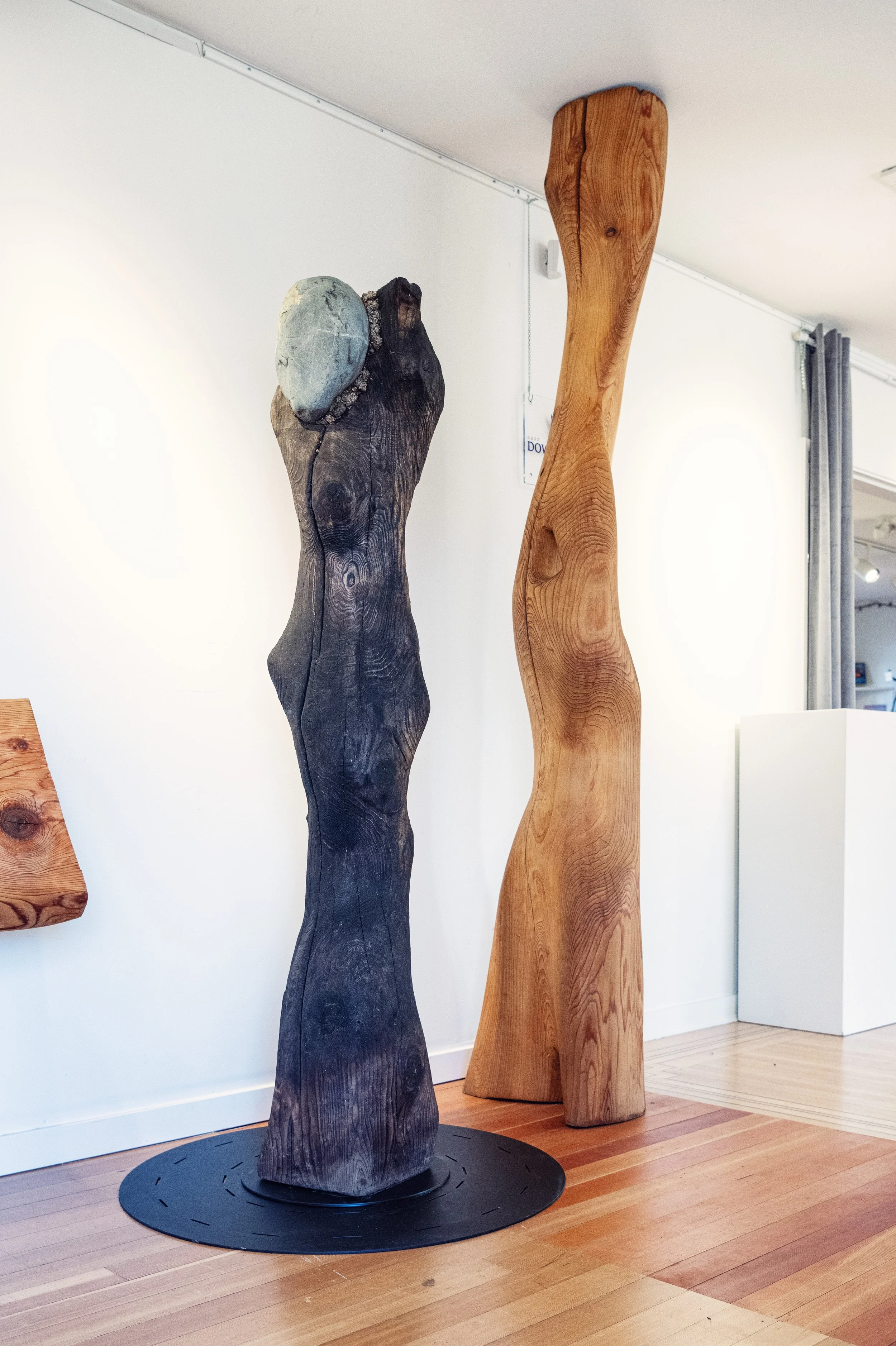
Statement
Dr. David J. Robinson’s sculpture can be understood by the way he considers time, space and ways in which the form is created. Although Robinsons’ contemporary works bring to mind visionary sculptors Constantin Brancusi, Henry Moore and traditional First Nations carvers, Robinsons’ work is not fashioned directly by their works. However, Robinsons sculptures share a way of exemplifying the simple forms that reflect archetypal representations of their subject matter.
In juxtaposition to elements of sculptor Constantin Brancusis’ pieces, Robinsons’ work shares the aspect of direct carving in such a way that the carving out of the forms make known their concealed truths. Brancusi said, "The artist should know how to dig out the being that is within matter" Brancusi’s work was fueled by myths, folklore and primitive cultures modernity and timelessness. Brancusi meticulously polished pieces for to achieve a gleam that suggested infinite continuity into the surrounding space. Robinson shares in the close attention to his own technique of rigorous polishing the pieces but where Brancusis’ technique intends to integrate the surrounding space, Robinson further develops a departure from Brancusi as the space informs the piece but is not intended to permanently set in the space.
In juxtaposition to elements of Henry Moores’ pieces, Robinsons’ work shares the aspect of understanding important structural principles that contribute to the balance and form of the piece. Henry Moore said, Bones are the inside structure that nature uses for both lightness and strength…so in bones you can find the principles which can be very important in sculpture. Robinson shares in the adherence to the inside structure, however Moore fashioned the sculpture from objects in nature such as for the bones of animals, for Robinson there is a strong emphasis on directly using the knots. Moores’ surface treatment often revealed the wood grain and Robinsons’ pieces reveal the wood grain in a unique way that reminds one of the way time is revealed in the language of nature.
In juxtaposition to elements of traditional First Nations pieces, Robinsons’ work shares an understanding of the relationship of nature all living beings and the need to acknowledged the land and the people who inhabit it. As traditional First Nations carving employed mythical figures and ceremony, Robinson also pays attention to their relationship. Robinson regards his pieces as contemporary sculptures that are imbued by his First Nations philosophies.
Robinsons’ current public art sculptures located in Vancouver include Many Beings 2016, Thunder Child UBC 2016, Dancing Flames UBC 2017, Protector Robert Lee Alumni Building 2020-2022, Medicine Bowls VSB Board Office 2020, Great Whale Lord Byng Secondary 2021, Alter Kílala Lelum Health Center 2020, Bean Around the World Bench 2020, Emergence East Vancouver Education Center 2020, Medicine Wheel Puzzle Project 2020, UBC Longhouse Bench 2020, UBC Farm Benches 2020, Red Cedar Heartwood River Lord Byng 2020, Medicine Snake UBC 2020, Beaver 2020, Grandfather Benches VSB 2021, Ogo Pogo VSB 2021, Prudence Lord Byng 2021, Treasure Boxes Project 16 sculptures VSB 2022, Mother Daughter 2022, Spirit Bear 2022, Ocean and Sky 2022.